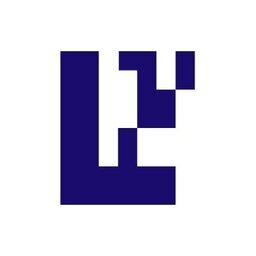Eigen Layer

Restaking protocol for Ethereum.
About Eigen Layer
Eigen Layer is a pioneering restaking protocol built on Ethereum that enables the reuse of staked ETH or liquid staking tokens (LSTs) to secure additional decentralized services, known as Actively Validated Services (AVSs). By allowing Ethereum validators to "restake" their assets, Eigen Layer creates a pooled security marketplace where protocols can leverage Ethereum’s robust cryptoeconomic trust network without bootstrapping their own validator sets. This innovation reduces capital costs for new projects and enhances overall ecosystem security.
Main Products/Services:
- Restaking Infrastructure: Supports native ETH restaking (via beacon chain credentials) and LST restaking (e.g., stETH, rETH).
- AVS Ecosystem: A growing network of 50+ AVSs in development, including data availability layers (e.g., EigenDA), decentralized oracles, and cross-chain bridges.
- Operator Marketplace: Validators can delegate stakes to operators running AVS software, earning rewards from multiple services simultaneously.
Significance: Eigen Layer redefines Ethereum’s security model by commoditizing trust, enabling permissionless innovation for middleware and infrastructure projects while improving capital efficiency for stakers.
Technology
Eigen Layer’s core innovation is restaking, a cryptoeconomic primitive that extends Ethereum’s consensus-layer security to off-chain services.
Technical Approach:
- Restaking Mechanism:
- Native Restaking: Validators redirect beacon chain withdrawal credentials to Eigen Layer’s smart contracts.
- LST Restaking: Users deposit liquid staking tokens (e.g., stETH) into Eigen Layer’s contracts.
- Pooled Security: Stakers opt into AVSs, allowing their ETH to enforce slashing conditions for multiple services.
- Attributable Security: Slashing risks are isolated per AVS, preventing systemic failures.
Key Innovations:
- Free-Market Governance: Operators and stakers choose which AVSs to support, creating competitive validation markets.
- Modular Trust: AVSs inherit Ethereum’s security without requiring EVM compatibility.
Problems Solved:
- Eliminates the need for protocols to bootstrap validator networks.
- Reduces capital inefficiency by allowing ETH to secure multiple services.
Key Features
- Pooled Security: $15B+ in restaked ETH secures 9 live AVSs (2025).
- Dual Restaking Modes: Native ETH and LST support (e.g., Lido, Rocket Pool).
- Slashing Conditions: Customizable penalties per AVS to deter malicious behavior.
- Capital Efficiency: Stakers earn yield from Ethereum and AVSs simultaneously (up to 8% APR).
- Operator Tools: Python/Rust SDKs and CLI for AVS deployment and management.
- Decentralization Safeguards: Caps limiting any single entity to 33% of stake.
- EigenDA Integration: High-throughput data availability layer reducing L2 costs by ~90%.
Integration with Eliza
While no official ElizaOS plugin is publicly documented, Eigen Layer’s architecture supports seamless integration through:
- API Access: ElizaOS could leverage Eigen Layer’s smart contracts for in-app restaking.
- AVS Deployment: Developers using ElizaOS might utilize Eigen Layer’s SDKs to build validated services.
- Operator Synergies: ElizaOS users could delegate stakes to Eigen Layer operators directly from the OS interface.
Potential Use Cases:
- One-click restaking via ElizaOS dashboard.
- Native integration of EigenDA for ElizaOS-based rollups.
- Cross-platform rewards aggregation (ETH + EIGEN tokens).
Recent Developments
- April 2025: Launched EigenDA mainnet, processing 1.2M transactions/day.
- Q1 2025: Secured $100M Series B led by a16z, valuing Eigen Layer at $8B.
- Partnerships: Integrated with Binance for liquid restaking and Kraken for institutional restaking.
- Roadmap: Plans to onboard 100+ AVSs by Q3 2025 and introduce EIGEN token staking.
Market Position
Competitive Edge:
- Dominates restaking with ~80% market share ($8B TVL).
- Unique positioning as both infrastructure (AVS security) and middleware (EigenDA).
Key Partnerships:
- Lido: LST restaking integration.
- Binance: Institutional restaking portal.
- Renzo: Liquid restaking token (LRT) standard.
Adoption: Over 200,000 active restakers and 1,400 operators as of April 2025.
Links
- Website: eigenlayer.xyz
- Documentation: docs.eigenlayer.xyz
- GitHub: github.com/eigen-layer
- Ecosystem: EigenLayer AVS Directory
- Staking: Kraken EigenLayer Integration